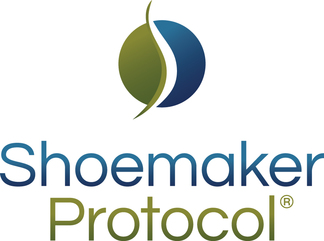Week of March 13, 2023

1/ Correct MSH ranges
QUESTION: Where is the normal range for MSH derived from, 35-81 pg/ml. I have found a study on line that shows healthy people below 35 and none above 35.
ANSWER: There are at least 10 separate proteomic assays where the normal range has been altered by LabCorp. Until 9/2006, LabCorp used 35-81 for the normal range for MSH. Those data were consisted with papers I published before 2006.
LabCorp changed the normal from 0-45 and then 0-40 for unknown reasons in 9/2006. We published a paper in Health in 2013 with case/control data confirming the normal MSH ranges.
2/ Correct MMP-9 ranges
I’ve noticed that Shoemaker protocol MMP-9 testing ranges are different than the reference ranges of LabCorp and Quest. Has there been an update? Which one is correct?
ANSWER: Longtime Shoemaker Practitioner, Dr. Scott McMahon has a complete answer to this question in an article we have posted on the Surviving Mold Site. Here is an edited overview with a link to the complete article:
“The currently published results (by Lab Corp and Quest) are not correct. They are not consistent with the worldwide peer-reviewed published literature (used in the Shoemaker Protocol). They are not even consistent with other ranges for MMP-9 developed by Quest and LabCorp with known data! I was once asked at a deposition if using other-than-published reference values was medical malpractice? I responded that, to know what I know, it would be malpractice to still use the currently published reference ranges. Allow me to explain.
LabCorp bought the Exoterix lab which developed the assay for MMP-9 and runs the assay to this day. Dr. Ritchie Shoemaker asked the Balitmore Quest lab to also run the assay. They agreed if Dr. Shoemaker could provide case MMP-9 blood samples to ensure validataion of the Esoterix test and control blood samples to define reference ranges. Dr. Shoemaker did so. The initial serum reference range of 85-332 ng/ml for Quest was established by William Meyer, PhD, MT, Technical Director of the Baltimore lab, in 2004, using Dr. Shoemaker’s provided samples.
… What changed is the way the reference range was calculated. The initial range of 85-332 ng/mL was calculated using the standard technique of measuring from at least 120 healthy controls, calculating the mean and SD and using the formulas of the mean minus 2 x SD as the lower limit and the mean plus 2 x SD as the upper limit. What changed is that the results of controls AND cases (sick people) apparently were pooled together. The statistics were run again, now giving a much higher standard deviation (now at least 225 ng/mL, or >3.5 times the previous highest SD, which also was from Esoterix), leading to much wider reference ranges. The SD are greater because the dispersion of data is greater. This is because controls, with normal values of MMP9, and ill persons with elevated (by previously published reference ranges) were pooled into the same statistical analysis. As such, the "new and improved" reference ranges are useless and even dangerous. This is why I reject them (Figure 2)…”
3/ Anti-inflammatory pathways
QUESTION: Do muscles act as an endocrine gland to decrease inflammation?
ANSWER: The important regulators of inflammation remain the neuropeptides, MSH and VIP. These hormones will have a variety of effects on metabolic pathways and muscle but muscle itself is not an endocrine gland. ACTH and cortisol are important mediators of inflammation as well, though under regulation of MSH and VIP, among others, but muscle effects are due to other hormones, including ACTH and cortisol and not the reverse.
4/ Bile, acid reflux, GI problems and CSM
QUESTION: My understanding is that in patients with HLA susceptibility, biotoxins are not self- removed from the body. Could a build up of biotoxins in bile contribute to pain in the gallbladder?
The cells that line the biliary tree, comprising what are called the bile canaliculi, have a transport system called the organic anion transport protein system. The OATP selectively secretes ionophores (toxins) into bile. There is no storage in these compounds in bile as there will be ongoing movement of these compounds out of bile back into the liver. For those biotoxin secreted into bile, that are then stored in gallbladder, there will be some concentration of biotoxins in bile but the vast majority will be released from the gallbladder, through the Sphincter of Oddi into the duodenum. There biotoxins can be reabsorbed through the intestine to continue their merry and endless cycle of secrete and reabsorb. This so-called “enterohepatic recirculation” is incredibly common in biotoxin patients. This cycle forms the basis for use of cholestyramine with successful reduction of inflammatory parameters reduced by decreased carriage of biotoxins.
What we see in over half of biotoxin patients are two separate bile-related problems. 1) The first is cholestasis, which is a reduction at the rate of bile movement. This is worse in the face of androgen deficiency as well. 2) the second is related to bile acid reflux inwhich some biliary material will go the wrong way, crossing upstream back through the pylorus, causing significant stomach upset. This stomach upset sounds like stomach acid reflux but it does not respond to standard reflux medicine like Prilosec and Zantac. For those unfortunate people who have bile acids refluxing all the way back up the esophagus, they have a severe, bitter bile taste in their mouth. Yuck!
Use of therapeutic doses of cholestyramine is your first medical intervention, but if you have significant pre-existing GI discomfort problems, a problem cholestyramine can make worse, I find that pre-treatment with sucralfate has improved the quality of life in bile acid reflux patients quicker.
Finally, if you have a sluggishly contracting gallbladder with reduced ejection fraction seen on HIDA scan that is a separate issue that usually will result in removal of gallbladder by laparoscopy.